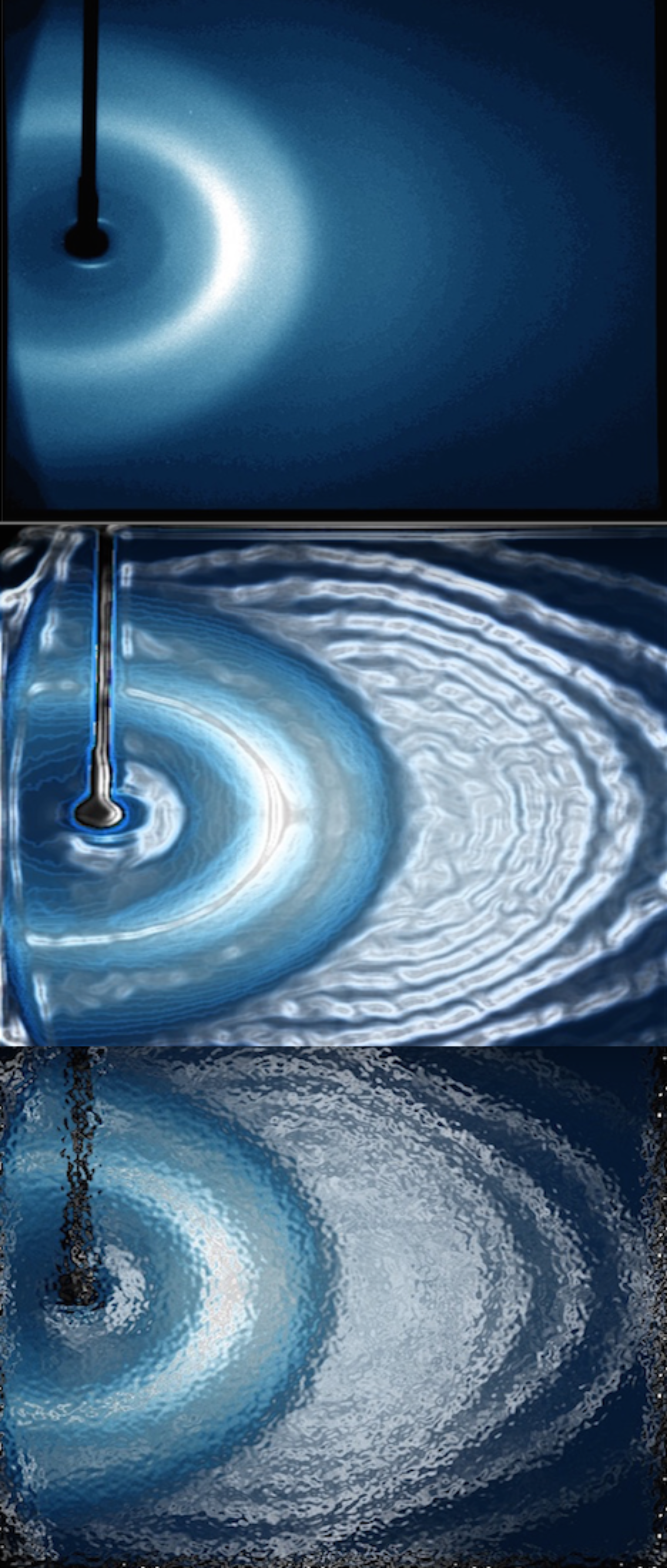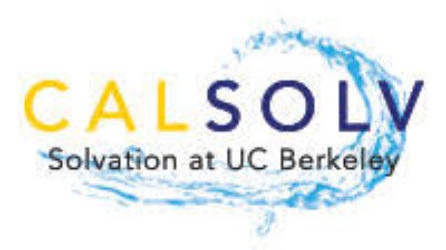Invited Lectures
- E.R. Williams. 1st Advancing Mass Spectrometry for Biophysics and Structure. Ann Arbor, Michigan. July 27-August 2, 2017. “Mass, Mobility and MSN Measurements of Individual Ions with Charge Detection Mass Spectrometry”
- E.R. Williams. 14th Uppsala Conference on Electron Capture and Transfer Dissociation Mass Spectrometry. Ithaca, New York. July 13-15, 2017. “Electrochemistry in the Gas Phase and In Solution”
- E.R. Williams. 10th International Conference on Chemical Kinetics. Chicago, Illinois. May 21-25, 2017. “Fast Reactions in Aqueous Nanodrops” Plenary Lecture
- E.R. Williams. 11th North American FT MS Conference. Key West, Florida. April 23-26, 2017. “Mass, Mobility and MSN Measurements of Individual Ions with Charge Detection Mass Spectrometry”
- E.R. Williams. Pittcon. Chicago, Illinois. March 5-9, 2017. “The Transition of Native Biomolecules from Solution into the Gas Phase”
- E.R. Williams. Gordon Research Conference on Gaseous Ions: Structures, Energetics & Reactions. Ventura, California. February 17-21, 2017. “New Techniques for Studying Gaseous Ions”
- E.R. Williams. Gordon Research Seminar on Gaseous Ions. Ventura, California. February 11, 2017. “The Chemistry of Ions in Aqueous Nanodrops” Student-invited Speaker
- E.R. Williams. ASMS Asilomar Conference. Asilomar, California. October 14-18, 2016. “The Chemistry of Ions in Aqueous Nanodrops”
- E.R. Williams. Collaborative Research Center Conference on Cooperative Effects in Homo-and Heterometallic Complexes. Kaiserslautern, Germany. October 5-7, 2016. “The Chemistry of Ions in Aqueous Nanodrops” Keynote Lecture
- E.R. Williams. Department of Chemistry, University of Texas, Arlington. April 29, 2016. “New Insights into Molecular Structure and Ion Solvation From Mass Spectrometry”
- E.R. Williams. 12th European Fourier Transform Mass Spectrometry Workshop. Matera, Italy. April 5-8, 2016. “The Chemistry of Ions in Aqueous Nanodrops” Plenary Lecture
- E.R. Williams. ACS National Meeting. San Diego, California. March 13-17, 2016. “Evolution of Protein Structure in Electrospray Ionization: From Solution into the Gas Phase”
- E.R. Williams. Pittcon. Atlanta, Georgia. March 6-10, 2016. “Charge Detection Mass Spectrometry for Single Ions”
- E.R. Williams. Department of Chemistry, Florida International University. Miami, Florida. February 5, 2016. “New Insights into Molecular Structure and Ion Solvation From Mass Spectrometry”
- E.R. Williams. Gordon Research Conference on Molecular & Ionic Clusters. Ventura, California. January 17-22, 2016. “New Insights into Ion Solvation from Ions in Nanodrops”
- E.R. Williams. Pacifichem 2015 Meeting. Honolulu, Hawaii. December 19, 2015. “Supercharging and Activation of Proteins by Mass Spectrometry”
- E.R. Williams. Pacifichem 2015 Meeting. Honolulu, Hawaii. December 16, 2015. “Ion Hydration in Aqueous Nanodrops”
- E.R. Williams. Department of Chemistry, Washington University. St. Louis, Missouri. October 20, 2015. “New Insights into Molecular Structure and Ion Solvation From Mass Spectrometry”
- E.R. Williams. Department of Chemistry, University of California, Berkeley. October 6, 2015. “New Insights into Molecular Structure and Ion Solvation From Mass Spectrometry”
Ion Hydration.
Hydrogen-bonding networks of water are affected by interfaces, such as those between water and air, or water and proteins. These water networks are also affected by ions, and ion-water interactions play an important role in the Hofmeister phenomena as well as the surface activity of ions. The latter can increase reaction rates at surfaces by many orders of magnitude, and can play an important role in the chemistry of the atmosphere. Our group has unique capabilities to investigate how ions affect the hydrogen-bonding network of water molecules, and have demonstrated that some ions can affect these networks well beyond what conventional methods have been able to measure.1 My laboratory can generate large gaseous nanodrops containing single ions or containing multiple ions using electrospray ionization. These nanodrops consisting of up to 700+ water molecules can be trapped in the ultra-high vacuum cell of a Fourier-transform ion cyclotron resonance mass spectrometer, equilibrated to a specific temperature, mass selected, and the structures probed using a variety of different methods, including infrared photodissociation (IRPD) spectroscopy,1 electron-ion recombination (reduction chemistry),2 ion nanocalorimetry,2 and fluorescence.3 Because mass selection is done, specific sized nanodrops with just one ion, or a well-controlled group of ions can be individually investigated. Thus, the role of counter-ions on the hydrogen-bonding network of water and the ion chemistry can be unambiguously determined. A nanodrop with 500 water molecules has a diameter of over 3 nm, and the chemistry of many of the ions that we have investigated approaches that in infinitely dilute solution. Another important advantage of size selection is that structures of smaller clusters can be investigated experimentally, and compared to infrared spectra computed for low-energy structures at high levels of theory. We have demonstrated a method to determine populations of isomers, and from the temperature dependence of the populations, information about the differences in energies between isomers can be obtained with high accuracy (a few kJ/mol).4,5 Thus, these measurements serve as benchmarks for theory, and should be useful for computation chemists interested in extending theoretical methods to larger clusters and to properties of ions in bulk water. We would plan to investigate the hydration of select ions in different positions in the Hofmeister series to determine if there is a correlation between the ordering of ions and their propensities to structure the hydrogen-bonding network of water at distances remote from the ion. Essential to the success of this effort is collaborations with experts in computational chemistry of both relatively small systems where high level ab initio calculations can be applied and to much larger systems where molecular mechanics or hybrid methods must be used.
Water Clathrates.
Some hydrated ions in cluster distributions can have enhanced abundances compared to adjacent sized clusters, and are often referred to as magic number clusters. We have recently shown through IRPD spectroscopy that the origin of magic numbers of some ions, such as Cs, Rb, and K, with twenty water molecules is attributable to water forming clathrates around these ions.6 Moreover, we have demonstrated that it is possible to locate some of these ions as either in the center of the clathrate, such as is the case for NH4+, or at the surface as occurs for CH3NH3+.7 We have recently identified magic number clusters for much larger clusters for some anions with between 50 to 60 water molecules. Different patterns of magic numbers arise for different ions, but there is a greater propensity for ions that do not have a large affect on water-water hydrogen bonding networks to have similar magic numbers. This suggests that the origin of the magic numbers for these ions is attributable to water itself to organize into a high stability structure when confined in a nanodrop. By investigating many different ions, trends in magic numbers may emerge. In addition to providing benchmarks for theory, these results could lead to new insights into how water organizes around neutral molecules, such as methane.
Reactions in Droplets and at Droplet Surfaces.
We have recently demonstrated that it is possible to rapidly mix two solutions using custom theta-glass emitters for electrospray ionization using mass spectrometry for analysis of the resulting products.8 Complete mixing occurs, and reaction kinetics in the low μs time frame can be measured using mass spectrometry to detect both the products and the reactants with high sensitivity and specificity. The aim of this research would be to investigate processes relevant to atmospheric chemistry that occur in aerosols or at the surface of aerosols using this unique capability. General goals would be to determine if the droplet size, and hence lifetime, can be controlled by changing the physical properties of these emitters or other experimental parameters under our control. By pulling the emitters so that their tip diameters are less than a micron, it should be possible to generate initial droplets with diameters of a few hundred nanometers, and lifetimes that are less than a μs. Surface reactions with species inside the droplet could be investigated by forming much larger initial droplets with larger tips and by introducing reactants in the vapor phase near the tip of the emitter.9 The extent to which surface chemistry is taking place could be determined by varying the size of the droplet and by taking advantage of fluorescence methods to image the droplets with high sensitivity.
Investigating the Long-Distance Interactions between Ions and Water
Structures and reactivities of gaseous Fe(CN)63–(H2O)n were investigated10 using infrared photodissociation (IRPD) kinetics, spectroscopy, and computational chemistry in order to gain insights into how water stabilizes highly charged anions. Fe(CN)63–(H2O)8 is the smallest hydrated cluster produced by electrospray ionization, and blackbody infrared dissociation of this ion results in loss of an electron and formation of smaller dianion clusters. Fe(CN)63–(H2O)7 is produced by the higher activation conditions of IRPD, and this ion dissociates both by loss of an electron and by loss of a water molecule. Remarkably, there is no IR band corresponding to a free O−H stretch observed until n ≥ 70, indicating that this trianion significantly affects the hydrogen-bonding network of water molecules well beyond the second and even third solvation shells. These results provide new insights into the role of water in stabilizing high-valency anions and how these ions can pattern the structure of water even at long distances.
This research has been featured in C&EN.
Solutes may affect solvent networks over longer distances than previously realized, two separate research teams report. The results will help scientists understand how solvents influence the stability and reactivity of molecules and particles, as well as how those solutes in turn affect the properties of solvents. Mirijam Zobel and Reinhard B. Neder of Friedrich-Alexander University Erlangen-Nuremberg, in Germany, along with Simon A. J. Kimber of the European Synchrotron Radiation Facility, located in Grenoble, France, looked at the effects of colloidal metal and metal oxide nanoparticles on alcohols and hexane using high-energy X-ray scattering (Science 2015, DOI: 10.1126/science.1261412). The nanoparticles were 2.5 to 7 nm in diameter. The researchers found that the nanoparticles induced order distinguishable from bulk solvent as far as 2 nm out from the nanoparticle surface. Matthew J. DiTucci, Sven Heiles, and Evan R. Williams of the University of California, Berkeley, studied gas-phase clusters of Fe(CN)63– in water using infrared photodissociation spectroscopy (J. Am. Chem. Soc. 2015, DOI: 10.1021/ja5119545). They found that a single Fe(CN)63– molecule orients water molecules and influences the hydrogen-bond network out to the surface of clusters involving as many as 70 water molecules. Clusters of that size have a radius of about 0.8 nm from the ion.
References
- O’Brien, J. T.; Williams, E. R. “Effects of Ions on Hydrogen-bonding Water Networks in Large Aqueous Nanodrops” Am. Chem. Soc. 2012, 134, 10228-10236.
- Donald, W. A.; Leib, R. D.; Demireva, M.; O’Brien, J. T.; Prell, J. S.; Williams, E. R. “Directly Relating Reduction Energies of Gaseous Eu(H2O)n3+, n = 55 to 140, to Aqueous Solution: The Absolute SHE Potential and Proton Solvation Energy” Am. Chem. Soc. 2009, 131, 13328-13337.
- Donald, W. A.; Leib, R. D.; Demireva, M.; Williams, E. R. “Ions in Size-Selected Aqueous Nanodrops: Sequential Water Molecule Binding Energies and Effects of Water on Ion Fluorescence” Am. Chem. Soc. 2011, 133, 18940-1849.
- Prell, J. S.; Correra, T. C.; Chang, T. M.; Biles, J. A.; Williams, E. R. “Entropy Drives an Attached Water Molecule from the C- to N-terminus on Protonated Proline” Am. Chem. Soc. 2010, 132, 14733-14735.
- Prell, J. S.; Chang, T. M.; O’Brien, J. T.; Williams, E. R. “Hydration Isomers of Protonated Phenylalanine and Derivatives: Relative Stabilities from Infrared Photodissociation” Am. Chem. Soc. 2010, 132, 7811-7819.
- Cooper, R. J.; Chang, T. M.; Williams, E. R. “Hydrated Alkali Metal Ions: Spectroscopic Evidence for Clathrates” Phys. Chem. A. 2013, 117, 6571-6579.
- Chang, T. M.; Cooper, R. J.; Williams, E. R. “Locating Protonated Amines in Clathrates” Am. Chem. Soc. 2013, 135, 14821-14830.
- Mortensen, D. N.; Williams, E. R. “Theta-Glass Capillaries in Electrospray Ionization: Rapid Mixing and Short Droplet Lifetimes” Chem. 2014, 86, 9315-9321.
- Enami, S.; Sakamoto, Y.; Colussi, A. J. “Fenton Chemistry at Aqueous Interfaces” Natl. Acad. Sci. 2014, 111, 623-628.
- DiTucci, M. J.; Heiles, S.; Williams, E. R. J. Am. Chem. Soc. 2015, 137, 1650 – 1657.


